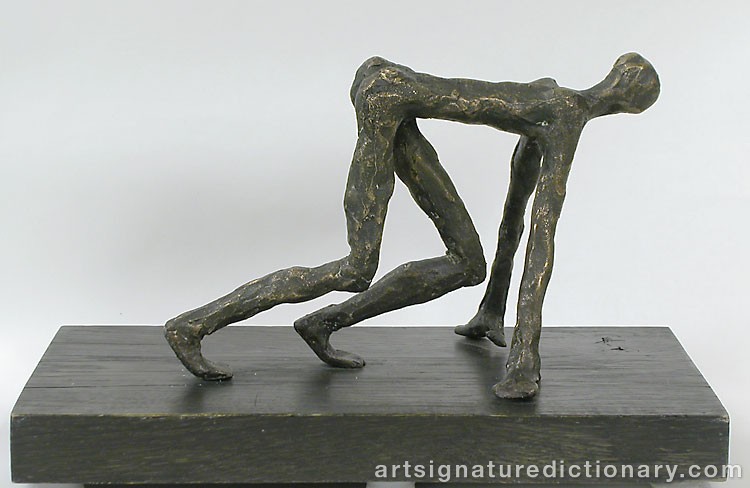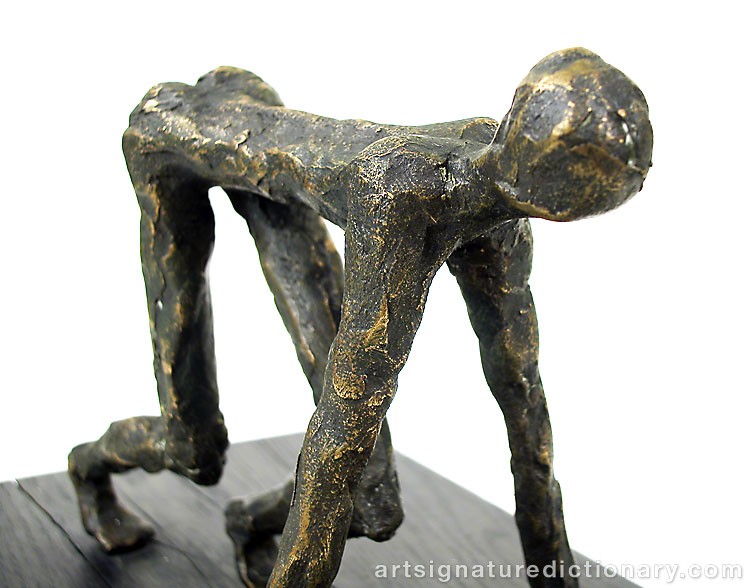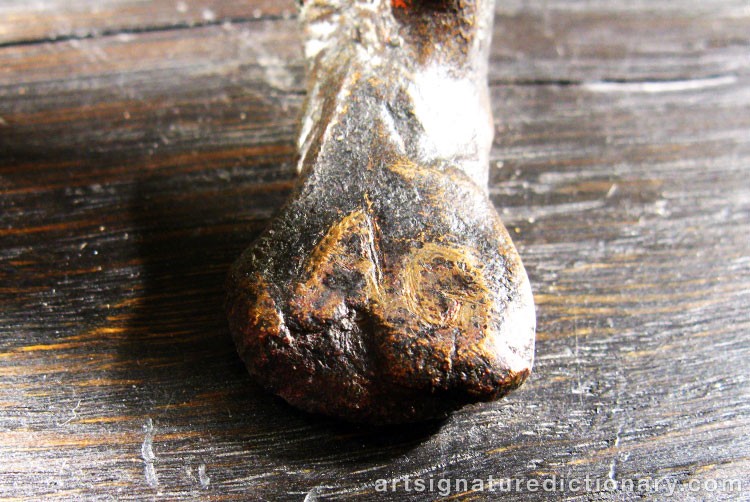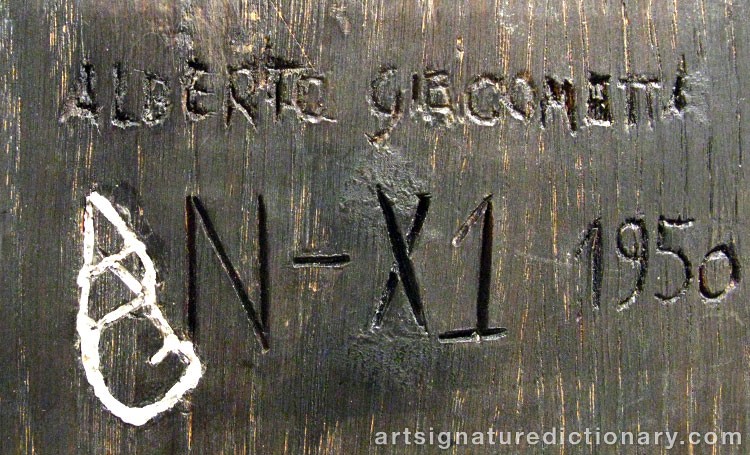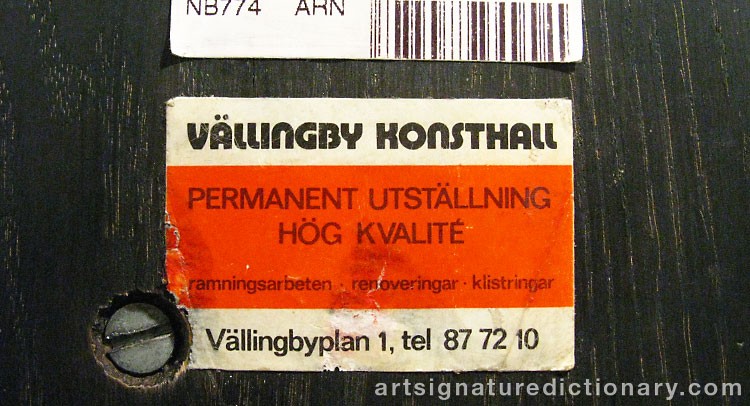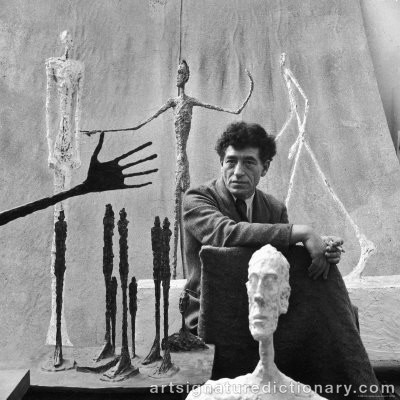
Alberto GIACOMETTI
1901–1966, Switzerland/Italy
Also known as: AG
Signatures & monograms
9 signatures and monograms by Alberto Giacometti on drawing, graphic, print, painting, watercolour and sculpture. Compare authentic and documented counterfeit examples to study signature characteristics.

Signature proven counterfeit
Sculpture in bronze, 16x23x13 cm, motive shows a runner in starting position, signed "AG", ostensibly, picturing an authentic sculpture made by Alberto Giacometti. The sculpture was found during searches in Mr. "MS" home in 2008. Police also found several counterfeit paintings by famous artists who were seized. The sculpture is marked "AG" and the base is marked "Alberto Giacometti N-XI 1950". There was also a manipulated letter regarding the sculpture, a receipt for the purchase of the sculpture where the word "to" is written in retrospect with a different pen, and signed by Mr. "MS" himself. A handwritten list "References" indicating that the sculpture have been to Vällingby Konsthall 1972, at Bukowskis auctions in 2002 and 2003 at Gallery Art & Design. The police also found tampered Journal of pictures from the 1950s depicting Alberto Giacometti and pictures of the sculpture which subsequently been inserted and a letter from the auction house Christie's who is skeptical about the sculpture is genuine and declines a sale. The police will also find a contract where "MS" gives another person the task of selling the sculpture. The District Court's assessment: The sculpture has been examined by experts who found no similarities from Giacometti 1950s production, and all papers and documents around the sculpture is manipulated, it is concluded that the sculpture is a fake and not an original work of Alberto Giacometti nor signed by him. "MS" is intended to mislead and lull the market into that the sculpture is genuine and made by the artist Alberto Giacometti, causing great harm to a buyer. The crime is considered serious fraud that give "MS" one year in prison.

Signature considered genuine

Signature considered genuine

Signature considered genuine

Signature considered genuine

Signature considered genuine

Signature considered genuine

Signature considered genuine

Signature considered genuine
Explore other artists
Discover other notable artists who were contemporaries of Alberto GIACOMETTI. These artists worked during the same period, offering valuable insights into artistic movements, signature styles, and authentication practices. Exploring related artists makes it easier to recognize common characteristics and artistic conventions of their era.





